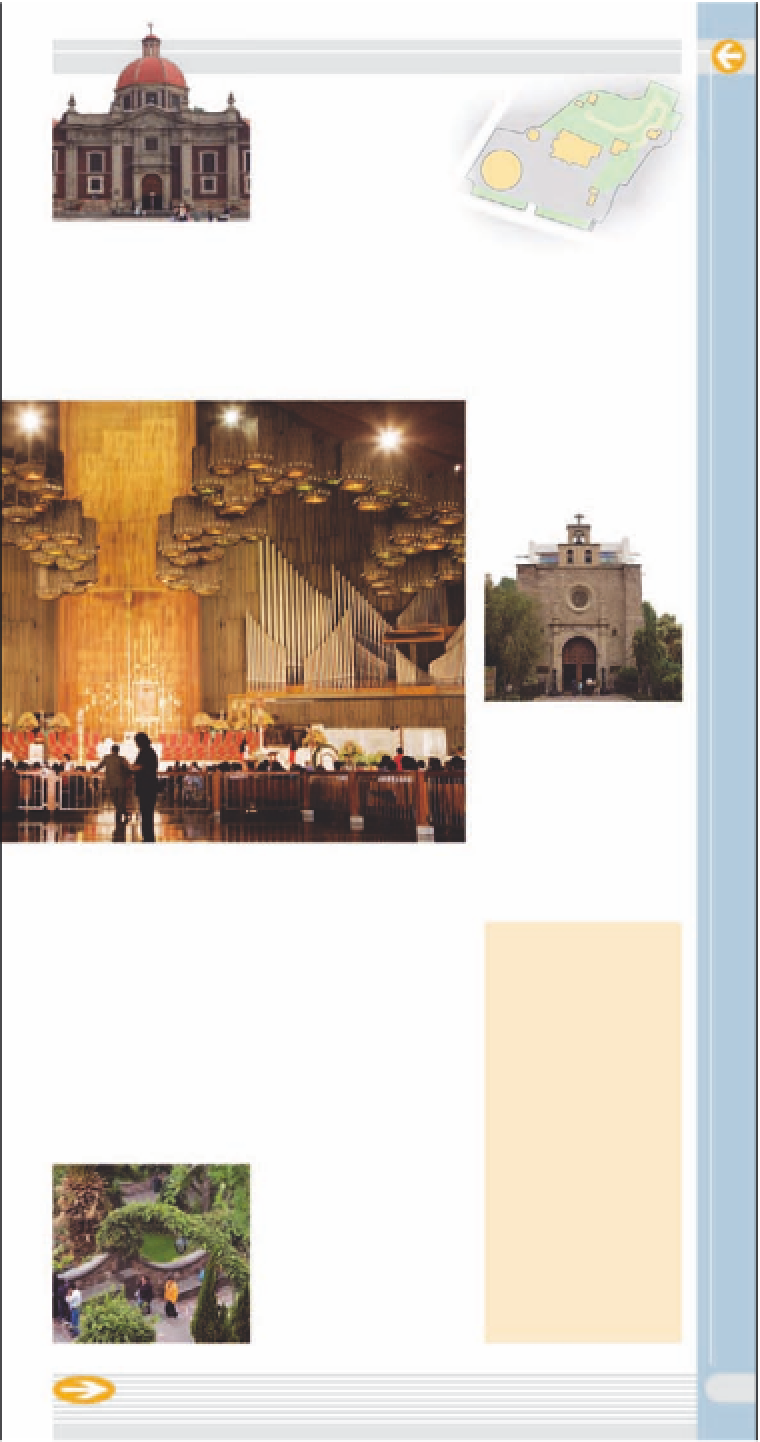Travel Reference
In-Depth Information
%
Museo de la
Basílica de
Guadalupe
The collections in this
interesting museum are
primarily of artistic reli-
gious objects related to
Our Lady of Guadalupe.
There are paintings,
sculptures, textiles, and
carvings. There is also a
collection of paintings by
artists including Cabrera,
Villalpando, and Correa.
$
Parroquia de
^
Parroquia de
Capuchinas
Initially a convent for
Capuchin nuns and then
used as a hospital, it
became a parish church
in 1929
(above)
.
Indios
This chapel dates from
1649 and in the small sac-
risty on the right can be
seen the remains of the
foundations of the original
chapel built in 1531. Juan
Diego lived his final years
in this place, and the
chapel is frequently ref-
erred to as the Chapel of
Juan Diego
(below)
.
&
Capilla del Pocito
Our Lady of
Guadalupe appeared to
Juan Diego at the spring
housed in this lovely
circular chapel. Built in
1791, the dome is dec-
orated with blue and
white tiles.
(
Garden and
*
Tepeyac
Walkway
A tiled walkway with
stairs and ramps was
built to direct the flow of
people to the Little Hill.
Near the base of the
staircase leading up the
hill is a lovely rose gar-
den. The path returning
from The Little Hill curves
through a large garden
area with fountains and
statues
(below)
.
Juan Diego found the
roses which appeared
miraculously in winter on
the top of Tepeyac, the
Little Hill. Capilla del
Cerrito was built in 1749
on the site. Fernando
Leal painted seven murals
depicting the story of the
appearance of the Virgin
to Juan Diego.
Juan Diego's
Vision
When Juan Diego told
the local bishop about
the story of the vision,
he was met with skepti-
cism. The Virgin reap-
peared to Diego and told
him to gather flowers,
and although it was win-
ter, Spanish roses were
blooming at Tepeyac.
When Diego opened his
cloak to show the bishop
the unseasonal flowers,
an image of the Virgin
was miraculously imprin-
ted on his cloak. The
prelate was convinced.
)
Carrillón
The huge stone cross
at the far end of the
plaza has bells that ring
every hour, and has four
different ways of telling
time. There is a modern
clock, an astronomical
clock, a sun dial, and an
Aztec calendar clock with
18 months of 20 days.
31
Juan Diego was canonized in 2002, becoming the first indigenous
saint in the Americas



































